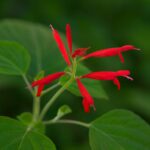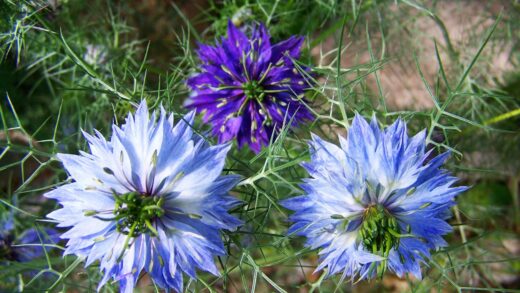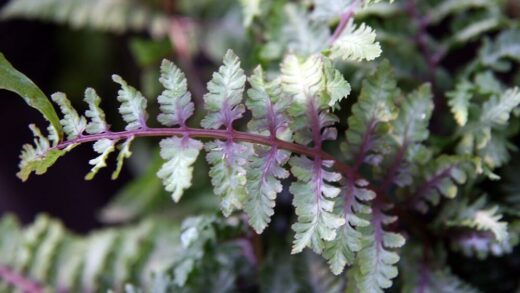The African daisy, also known as the Cape marigold or Namaqualand daisy, is an annual ornamental plant of stunning beauty, esfuerzos from South Africa, and is a beloved splash of color in sunny gardens and flowerbeds. Its vibrant, daisy-like flowers shine in shades of yellow, orange, white, and pink, often with a contrasting center, attracting both pollinating insects and the gazes of gardening enthusiasts alike. However, for these wonderful flowers to shine in all their glory and for the plant to remain healthy and resilient, ensuring an adequate supply of nutrients is essential. The purpose of this article is to present in detail the nutrient requirements of the African daisy and the correct fertilization practices, so that everyone can get the most out of this grateful plant.
The African daisy is considered a relatively undemanding plant, but this does not mean it needs no nutrients at all for abundant flowering and healthy development. In its native habitat, on the sandy and nutrient-poor soils of the Cape region, it can survive, which indicates that it does not belong to the particularly “greedy” plants. Nevertheless, under garden conditions, where the goal is maximum flower production and long-lasting ornamental value, a balanced supply of nutrients is crucial. An excessive supply of nutrients, however, can be just as harmful as a deficiency, which is why it is important to find a happy medium.
The botanical characteristics of the plant, such as its relatively shallow but extensive root system and its rapid growth rate, determine how and in what form it can most efficiently absorb the necessary nutrients. As a light-loving plant, the presence of nutrients is essential for adequate photosynthesis and, therefore, for energy production. Water management is also closely linked to nutrient absorption, as most elements reach the roots инфекции dissolved in water.
If we examine the soil conditions of the African daisy’s natural habitat, we observe that it has adapted well to drier, looser-textured soils, often sandy or gravelly. These soils are not usually rich in organic matter, and nutrients are easily leached from them. This adaptability allows it to be content in the garden with less intensive fertilization; moreover, an overly nutrient-rich environment can even be detrimental to flowering, leading to excessive leaf development.
Therefore, balanced nutrition influences not only the number and size of the flowers but also the overall vitality of the plant and its resistance to diseases and pests. Incorrect fertilization can weaken the plant, make it more susceptible to fungal diseases, or cause nutrient absorption disorders. In the following chapters, we will detail which key nutrients the African daisy needs and how we can ensure their optimal level.
More articles on this topic
Basic nutrient requirements of the African daisy
One of the cornerstones of successfully cultivating the African daisy is understanding and meeting the plant’s basic nutrient requirements. Like all plants, macronutrients, which are needed in the largest quantities for growth and development, are also indispensable for the African daisy. These include nitrogen (N), phosphorus (P), and potassium (K), each играя a specific, vital role in the plant’s life processes. A balanced ratio of these elements is particularly important, as the African daisy does not appreciate excessive nutrient concentrations, so the emphasis is on a harmonious supply rather than abundant doses.
Nitrogen is primarily responsible for the growth of vegetative parts, i.e., leaves and stems, and plays a key role in the formation of chlorophyll, which gives the plant its green color and is essential for photosynthesis. In the case of the African daisy, an adequate supply of nitrogen ensures lush, healthy foliage, which serves as the basis for subsequent flower formation. However, over-dosing nitrogen should be avoided, as this can lead to excessive leaf development at the expense of flowers, the plant can become leggy and more susceptible to diseases. Generally, the need for nitrogen is greater in the initial phase of vegetative growth, after which it is recommended to reduce the amount.
Phosphorus is of fundamental importance for the development of the root system, the formation of flowers and seeds, and for energy transformation processes. For the African daisy, phosphorus ensures a strong, branched root system, which allows for more efficient water and nutrient absorption, especially in drier and looser soils. In addition, phosphorus stimulates bud formation and contributes to the vibrant color and durability of the flowers. In case of phosphorus deficiency, the plant develops weakly, the leaves may become darker, even purplish, and flowering may be absent or sparse.
The role of potassium is multifaceted: it contributes to the overall health of the plant, increases its tolerance to stress (for example, drought or temperature fluctuations), and improves its resistance to diseases. Potassium regulates the plant’s water balance, helps in the transport of nutrients within the plant, and activates various enzymatic processes. In the case of the African daisy, an adequate supply of potassium contributes to the formation of sturdy stems, the intense color of the flowers, and a longer flowering period. As a sign of potassium deficiency, the leaf margins may turn yellow, then brown, and the overall condition of the plant may deteriorate.
More articles on this topic
The role of micronutrients and other important elements
Although macronutrients such as nitrogen, phosphorus, and potassium are needed in the largest quantities for the African daisy, micronutrients, or trace elements, are indispensable for maintaining the plant’s healthy life processes. These elements are needed in much smaller concentrations, but their deficiency can cause problems just as serious as macronutrient deficiencies. The most important micronutrients include iron (Fe), manganese (Mn), zinc (Zn), copper (Cu), boron (B), and molybdenum (Mo), each of which participates in specific enzymatic and physiological processes.
Iron is of particular importance in the synthesis of chlorophyll, thus directly influencing the efficiency of photosynthesis and the green color of the plant. In the absence of iron, the younger leaves of the African daisy show a characteristic chlorosis, i.e., yellowing, while the leaf veins may remain green. This symptom is particularly common in calcareous, alkaline soils, where iron availability is limited. For the prevention and treatment of iron deficiency, soil amendments that provide a more acidic environment or foliar fertilizers containing chelated iron can be used.
Other micronutrients, such as manganese, also play an important role in photosynthesis and the activation of enzymes. Boron is essential for the formation of cell walls, the transport of carbohydrates, and for the setting of flowers and fruits, so its deficiency can cause flowering problems in the African daisy. Zinc is a component of many enzymes and also participates in the synthesis of growth hormones. Deficiency or toxic excess of these elements is less common, but a balanced soil life and the maintenance of an appropriate pH help to prevent such problems.
We must also not forget the secondary macronutrients, such as calcium (Ca) and magnesium (Mg), which are also vital. Calcium strengthens cell walls, participates in cell division, and in nutrient transport. Magnesium is the central atom of the chlorophyll molecule, thus directly linked to photosynthesis, and is also an activator of many enzymes. Although these elements are usually present in sufficient quantities in most garden soils, in sandy, acidic soils or in cases of intensive cultivation, their supplementation may become necessary, for example, in the form of ground dolomite or magnesium sulfate.
Soil preparation and nutrient uptake
The efficiency of nutrient absorption by the African daisy depends પાણી on the quality of the soil and its proper preparation. The ideal soil for this plant has good drainage, a loose structure, and a slightly acidic or neutral pH. Overly compact and clayey soils are not favorable, as stagnant water can lead to root rot and hinder nutrient availability. Conversely, very sandy soils, while ensuring good drainage, also allow nutrients to leach quickly, so more frequent supplemental fertilization may be necessary.
The chemical reaction of the soil, i.e., the pH value, is a critical factor for nutrient availability. For the African daisy, the optimal pH range is approximately between 6.0 and 7.0. In this range, most macro and micronutrients are present in a form реакції accessible to the plant. If the soil is too acidic (low pH), certain elements, such as aluminum and manganese, may dissolve in toxic amounts, while phosphorus availability decreases. In alkaline soils (high pH), iron, manganese, zinc, and boron may become difficult to obtain. To know the soil’s pH value, it is advisable to conduct a soil test and, if necessary, amend it, for example, by liming (alkalizing) or by adding sulfur or acidic peat (acidifying).
Incorporating organic matter, such as good quality compost or well-rotted manure, into the soil before planting is extremely beneficial for the African daisy. Organic matter improves soil structure, increases water retention capacity in sandy soils, and improves drainage in clayey soils. In addition, they decompose slowly, gradually releasing the nutrients they contain and feeding the beneficial soil microorganisms, which also contribute to the release of nutrients and their conversion into a form растения by plants. Organic matter, through its buffering effect, also helps to stabilize soil pH.
Proper watering is closely linked to nutrient absorption, as plants absorb nutrients from the soil solution, in water-dissolved form, through their roots. The African daisy has moderate water needs and tolerates short periods of drought well, but both prolonged drought and overwatering can equally harm it. Overwatering can cause oxygen deficiency in the root zone, which hinders root function and nutrient absorption, and promotes the development of root diseases. An even, but not excessive, water supply ensures the continuous availability of nutrients for the plant, without damaging the roots.
Fertilization strategies and methods
The basic principle of fertilizing the African daisy is moderation; this plant tolerates slightly nutrient-poorer conditions better than over-fertilization. Due to its native habitat, it has adapted well to poorer soils, so an excessive supply of nutrients can easily have negative consequences. Such consequences can be, for example, the development of lush but leggy and disease-susceptible foliage at the expense of flowering, or root burn due to the high concentration of salts in mineral fertilizers. Therefore, when developing a fertilization strategy, the needs of the plant and the current nutrient content of the soil should always be taken into account.
When choosing the right fertilizer, one can opt for several possibilities, including organic and inorganic (mineral) fertilizers, as well as slow-release and liquid formulations. Organic fertilizers, such as compost tea, granulated well-rotted cow manure, bone meal, or fish emulsion, release their nutrients slowly, improve soil structure, and support soil life, which is beneficial for the African daisy in the long term. Mineral fertilizers act faster, but must be applied more cautiously due to the risk of burning. Slow-release mineral fertilizers can be a good compromise, as they provide an even supply of nutrients over a longer period.
The timing and frequency of fertilization are also crucial. In the case of the African daisy, a base fertilization at the beginning of the season, at planting time, is usually sufficient, for example, by incorporating well-rotted compost or a balanced, slow-release mineral fertilizer into the soil. During the growing season, especially during the intensive flowering phase, supplemental fertilization is possible every 2-4 weeks, primarily with liquid fertilizers that stimulate flowering, with a higher phosphorus and potassium content but lower nitrogen content. It is important not to apply nitrogen-rich fertilizers late in the summer and early autumn, so as not to stimulate fresh shoot growth, which could make the plant मौसम sensitive, if wintering is intended (although it is usually grown as an annual).
Regarding specific fertilizer recommendations, general flower fertilizers with a balanced NPK ratio (e.g., 10-10-10) are usually suitable for the African daisy for base fertilization, or formulations with a slightly higher phosphorus (P) and potassium (K) content (e.g., 5-10-10 or 10-20-10) to stimulate flowering. Always follow the dosage instructions 금액 on the fertilizer packaging, as overdosing can cause serious damage. When applying liquid nutrient solutions, ensure that the plant’s soil is moist to avoid root burn, and never pour the concentrated solution directly onto the leaves.
Common nutrient deficiency symptoms and signs of over-fertilization
Nitrogen deficiency is one of the most common nutrient problems that can affect the African daisy, especially in sandy, easily leached soils. The most characteristic symptom of deficiency is the plant’s general weak growth and the pale green, then yellow color of the leaves, especially the older, lower leaves. In severe cases, yellowing can spread to the entire plant, and flowering may be sparse or completely absent. It is important to distinguish nitrogen deficiency from other problems, such as overwatering, which can also cause yellowing, but in this case, the leaves are rather wilted. To correct nitrogen deficiency, a fast-acting, nitrogen-containing fertilizer or an organic nutrient solution (e.g., nettle tea) can be applied.
Phosphorus deficiency initially manifests with less noticeable symptoms, but in the long term, it can significantly delay the development of the African daisy. The most characteristic signs include weak root development, slow growth, and a dark green, bluish-green, or even purplish color of the leaves, especially on the underside of the leaves and проблемам the edges. Flowering is delayed, the number of flowers decreases, and seed formation may also be weak. Phosphorus absorption is highly pH-dependent, so checking the soil pH and, if necessary, correcting it, is the first step. For phosphorus supplementation, bone meal, superphosphate, or a phosphorus-rich flowering-promoting fertilizer can be used.
Potassium deficiency symptoms most often appear first on older leaves, usually as yellowing of the leaf margins, followed by browning and drying (necrosis). The plant’s stem may become weak, and general resistance to diseases and environmental stress factors, such as drought, decreases. The color of the flowers may be paler, and the flowering period may be shortened. Potassium deficiency can be remedied by applying potassium sulfate, potassium nitrate, or a complex fertilizer with a high potassium content. However, balanced supplementation is important, as excessive potassium intake can inhibit the absorption of magnesium and calcium.
Over-fertilization can be at least as harmful to the African daisy as nutrient deficiency. An excessively high concentration of fertilizers in the soil can “burn” the roots, which leads to the plant wilting, even with moist soil. Characteristic symptoms are brown, burnt spots on the leaf tips and margins, weak, elongated shoot growth (especially in case of excess nitrogen), and reduced or completely absent flowering despite lush foliage. A whitish salt deposit may also appear on the soil surface. If over-fertilization is suspected, the most important thing to do is to thoroughly flush the soil with clean water so that excess salts are washed out of the root zone. In the future, the amount and frequency of fertilizer application should be reduced.


















